Content
- 1 Description of low-growing chrysanthemums
- 2 Low-growing chrysanthemum varieties
- 3 How to plant low-growing chrysanthemums
- 4 How to form stunted chrysanthemums correctly
- 5 How stunted chrysanthemums breed
- 6 How stunted chrysanthemums winter
- 7 Diseases and pests of stunted chrysanthemums
- 8 Photo of dwarf chrysanthemums
- 9 Conclusion
Low-growing chrysanthemums are native to Korea. The plant is adapted for cultivation in regions with cold climates. Spherical varieties are used in design to create borders, mixborders are created, and grown for pots.
Description of low-growing chrysanthemums
Low-growing varieties of culture have more than 50 varieties with different colors, flowering period and bush size. All dwarf representatives form a crown of a regular spherical shape. The bushes are compact and very dense, budding is so abundant that the flowers completely cover the surface, starting from the base. The leaves of the plant are dark green, oblong with wavy edges, but they are not visible behind the flowers.
All low-growing varieties form small buds, the diameter of which rarely exceeds 7-9 cm. In shape, the flowers are divided into double, semi-double and simple.
A dwarf variety of culture in size is:
- undersized - 20-30 cm;
- medium size - 30-40 cm;
- high - 50-65 cm.
Flowering time is different: early varieties bloom in August, mid-late - in September, late - in early October. The biological cycle lasts 30-35 days.

Abundant flowering in a plant is observed only if the basic rules of agricultural technology are observed
Low-growing chrysanthemum varieties
Landscape designers recommend creating a mix of varieties of different flowering periods, then the bright, decorative look of the flower bed will remain for a long time: from late summer to the onset of frost. An overview of varieties of low-growing chrysanthemums with different flowering times and colors will allow you to choose the optimal seedling for planting in any region.
Mascot
The mascot is a dwarf chrysanthemum with a spherical bush. Plant height -30-35 cm. Flowers are small, bright burgundy, semi-double. Their diameter is 5-6 cm. The Talisman variety is used to create multi-tiered borders.

The flowering period begins at the end of August and lasts until the beginning of October.
Elfie White
The low-growing chrysanthemum Elf White is distinguished by small (up to 3.5 cm) flowers. The petals are white, the core is lemon-colored. The bush is compact, spherical, of medium height (45-50 cm). The flowers are simple.

Elf White is a mid-late culture that blooms in mid-September
Bransky plum
Branskay Plum is a tall chrysanthemum (up to 70 cm). The round bush is completely covered with large bright pink flowers.

Brunskay Plum blooms in September
Branbeach orange
Branbeach Orange is a low-growing, late-flowering chrysanthemum with a biological cycle starting in October. In the Middle and Central lane, the bush often leaves under the snow at the peak of flowering. This is one of the frost-resistant varieties with bright orange double flowers of medium diameter (up to 5 cm).

Plant height -55-60 cm
Branbeach Sunny
Branbeach Sunny is a bright yellow, small-flowered terry variety. It is a popular variety with a long flowering period (August-October). The flowers are double, their diameter is about 8 cm.
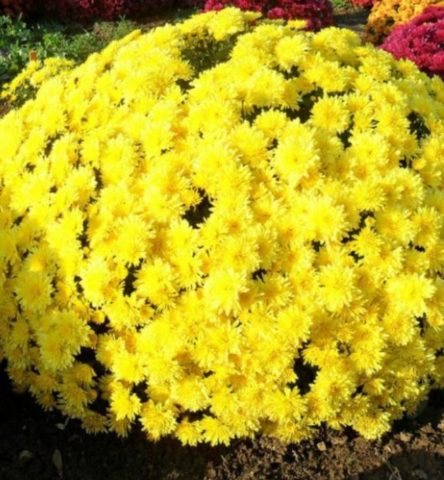
The height of the Branbeach Sunny bush - 50 cm
How to plant low-growing chrysanthemums
The technology of planting low-growing chrysanthemums depends on the method of cultivation.For use as an element of decor for a living room or an open veranda, the culture is planted in a container. The time of the work in this case does not matter. A flower pot is purchased 5-7 cm wider than the root system, the bottom is closed with drainage, the soil is used ready-made or a mixture of peat, humus and sand is made. Ampel cultivation is suitable only for dwarf varieties of chrysanthemums, the culture is perennial, after 3 years the container is replaced with a larger one.
Dwarf varieties are planted in the spring, multiflora varieties are adapted to a temperate climate, but they do not tolerate sharp drops. Seedlings are assigned to the site in the spring, when a positive temperature is established at night, and the threat of frost has passed. In the Central lane, they are guided by the end of May. In autumn (September), dwarf chrysanthemums can only be planted in the southern regions.
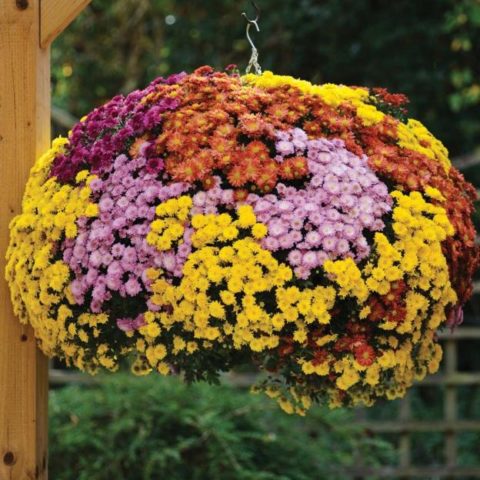
Chrysanthemum mix is often used for vertical landscaping
Selection and preparation of the landing site
Chrysanthemum of low-growing varieties is a light-loving culture, only with a sufficient supply of ultraviolet light, full-fledged photosynthesis is possible. In the shade, the stems stretch out, the plant looks weak, budding is rare, the flowers are small. Therefore, a sunny area, protected from the north wind, is chosen for planting.
Chrysanthemums grow well on loamy, aerated, fertile soil with a slightly acidic or neutral reaction. Areas with stagnant water are not considered. Constantly wet soil is unacceptable for culture. The site is prepared in advance, it is dug up, weed roots are removed, wood ash is scattered on the surface. Before starting work, a nutrient substrate is prepared from compost, peat and nitrophoska.
Landing rules
The day before planting, a hole is dug 40 cm deep, the bottom is closed with drainage and filled with water.
Following actions:
- The seedling is taken out of the transport pot, the earthen lump is not touched. If the root is open, it is immersed in the “Energen” product, which stimulates growth, for several hours.
- The seedling is placed in the center and covered with nutritious soil.
- Condensed and watered.

Between chrysanthemums with linear planting maintain a distance of 30-35 cm
Watering and feeding
Low-growing multiflora chrysanthemums react poorly to moisture deficiency; for the growing season, the soil must be moistened. The amount of watering is regulated depending on the frequency of precipitation. Stagnation of water is not allowed, since root decay is often observed. If you do not correct watering, the bush will die.
Top dressing is applied throughout the growing season:
- in the spring - nitrogen-containing fertilizers and growth stimulants;
- at the time of budding - superphosphate and organic matter;
- during flowering - Agricola for flowering plants;
- in the fall - potash preparations.
How to form stunted chrysanthemums correctly
Dwarf bush chrysanthemums form a spherical, regular bush shape. You can grow them in their original form or make minor adjustments. A few tips for shaping chrysanthemum multiflora:
- during planting, all lateral shoots are removed from the seedling and the crown is broken off;
- after 2 weeks, the bush is thinned out, cutting off weak shoots in the lower part and re-breaking off a couple of nodes on the peduncles left to create a crown;
- ideally, the plant should look like a ball completely covered with flowers, if leaves or stems go beyond the boundaries of a given shape, they are removed.
In the varieties of low-growing chrysanthemums, at the genetic level, the correct shape of the bush is laid, so there is no need for significant correction.
How stunted chrysanthemums breed
The possibility of generative reproduction depends on the shape of the flower. The seeds form in tubular petals in the center.There are no sterile varieties in the varieties of stunted chrysanthemums. The material is collected at the end of autumn, in the spring they are sown on the site or seedlings are grown, in this case, the sowing of seeds is carried out in February.
Low-growing curb chrysanthemums grow rapidly. The culture can be propagated by dividing the bush if the mother plant has reached the age of three.
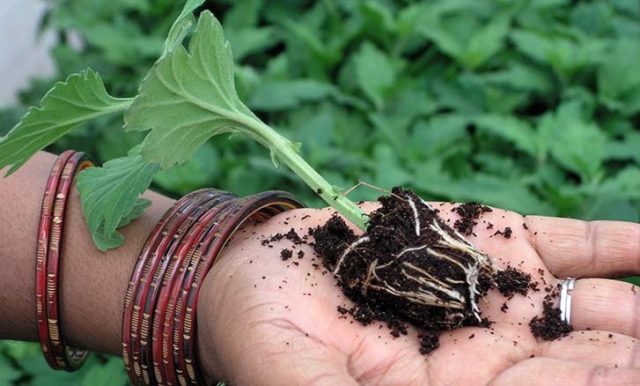
Low-growing chrysanthemums are bred vegetatively
For this, cuttings are cut in the spring, placed in fertile soil for rooting. For the winter they are brought into the room, and in the spring they are determined on the site.
How stunted chrysanthemums winter
If a chrysanthemum grows in a flower pot, it is taken out to a balcony or terrace for the summer, but it hibernates in stationary conditions. You can transplant the plant from open ground into a container, bring it into a greenhouse or leave it on a closed veranda if the temperature in the room does not drop below -7 0C.
Low-growing varieties of chrysanthemums are frost-resistant enough to stay in a flower bed in the cold season and not create unnecessary problems with transplantation.
After choosing a wintering method, the following activities are carried out:
- When the chrysanthemum has faded, the peduncles are shortened by 10-15 cm;
- Weak shoots thickening the bush are removed in the center;
- A preventive examination is carried out, if there are signs of the disease, the affected part is removed and the plant is treated with an antifungal agent.
- Approximately at the end of October, they are fed with phosphorus and potassium.
- They cover the root circle with mulch, install arcs, and stretch the covering material on them.

From the tops of the stems to the established arches, it is necessary to leave about 15 cm
Diseases and pests of stunted chrysanthemums
Low-growing varieties are attractive for gardeners, since they are distinguished by strong immunity. Plants rarely get sick when growing conditions are met. Problems arise only on excessively moist soil. In this case, watering is reduced or the bush is transplanted to a more suitable place.
Of the pests, slugs are a threat to undersized seedlings. They are harvested by hand or metaldehyde is used.
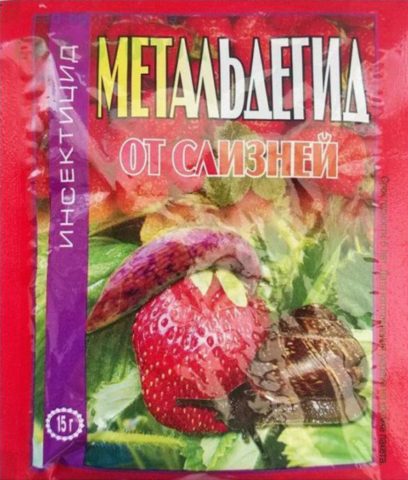
The insecticide is laid out near all chrysanthemums within a radius of 5 m
If there are anthills on the site, aphids may appear on the bushes, they get rid of it with Iskra.
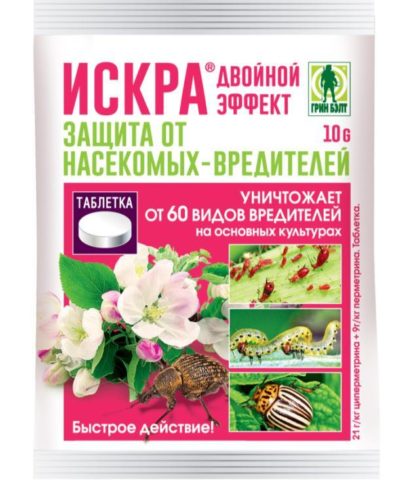
Mandatory processing of the soil and aboveground mass in the spring and at the first signs of the appearance of pests
Photo of dwarf chrysanthemums
Low-growing chrysanthemums are represented by various colors and shapes of flowers. Several photos of varieties popular in ornamental gardening will help you choose a flower that is suitable for a particular region.

Multiflora Ursula Red

Bush variety with a globular crown Branfountain Purple
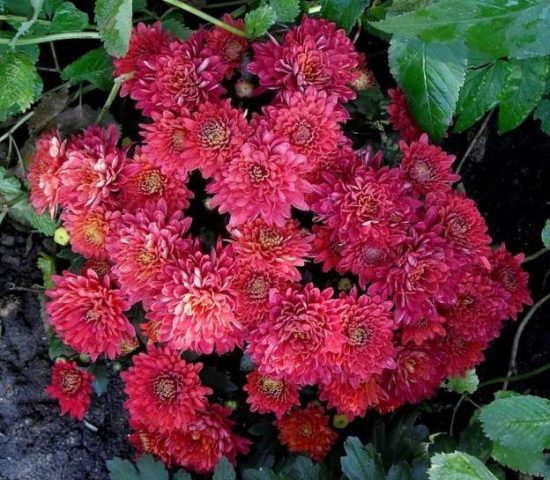
Coral Representative of the Branfountain Salmon Group

Low-growing variety Brandove White

Multiflora Brangala

Border variety Sund Cream
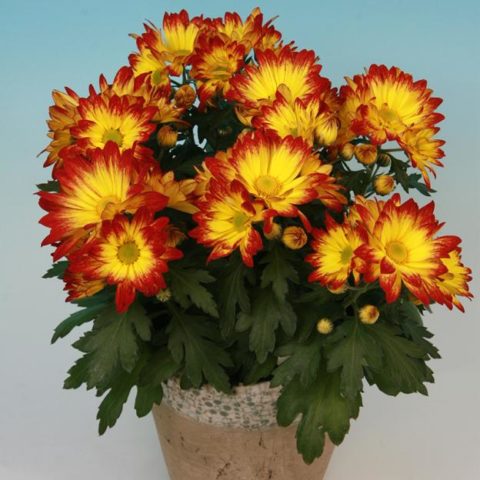
Ampel grade Maragon

Low-growing bush variety Green
Conclusion
Low-growing chrysanthemums are more stress-resistant than tall varieties. With proper shelter, they winter calmly in temperate climates. The culture is used in ornamental gardening, landscape design, grown in containers. The plant is characterized by strong immunity. Chrysanthemum is practically not affected by infections, blooms for a long time and profusely.








